HISTORY OF GRAPHIC DESIGN
1. PRE GUTTENBERG ERA

a) style of art and craft movement
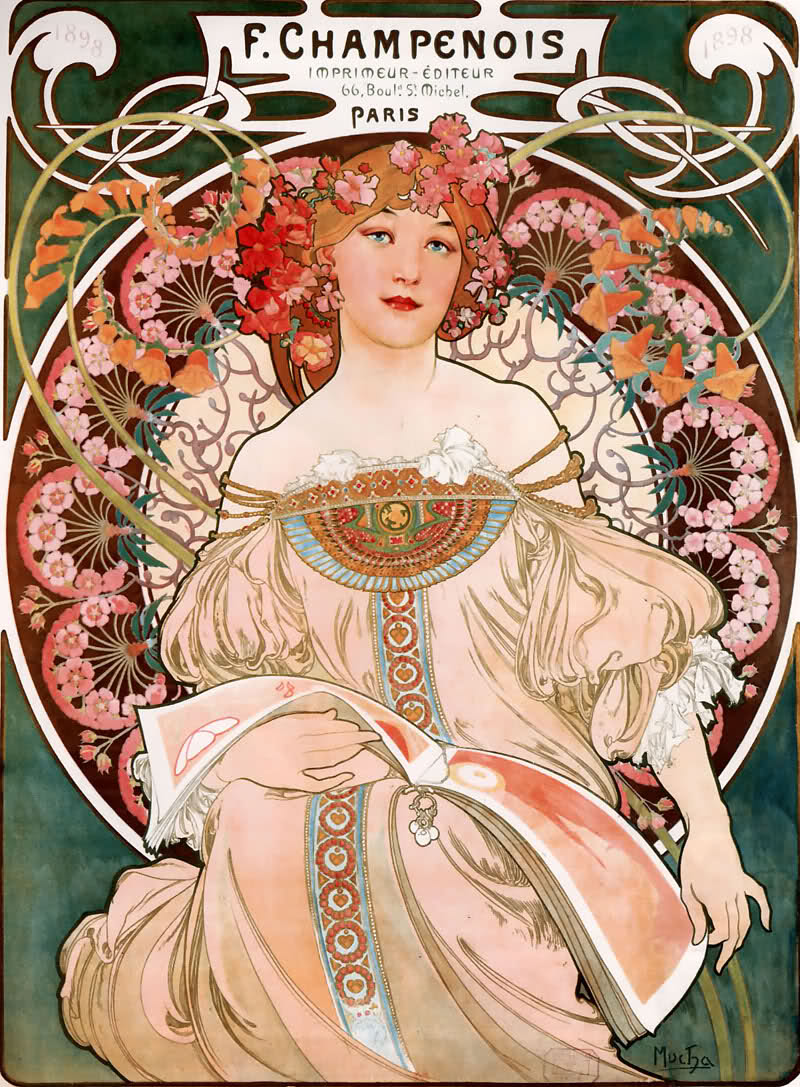
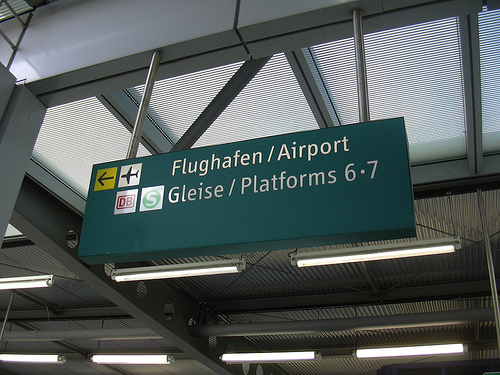
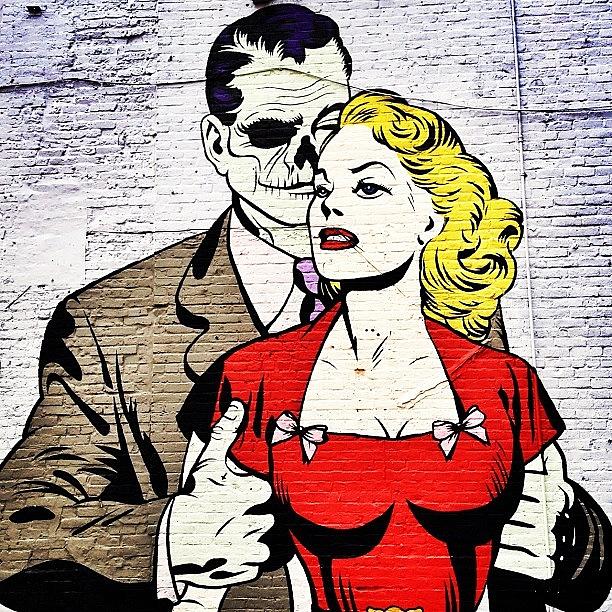




THE BASIC OF GRAPIC DESIGN
1. PRE GUTTENBERG ERA
( Year 1440 )–-– Johan > Guttenberg
-printing machine that consists of a metal and hard rubber that could be reassembled---the > refinement of wood cut (china) in the 8th century
-grid system---the element metal letters > arranged and locked in a frame (used until500 years later)


3. New profession era
graphic design as a profession has grown dieropa (19th century)
-beginning with the abundance of mass publishing in the form of posters
-style art and craft movement
art nuveau-style

a) style of art and craft movement
* English * (1851)
-exhibition of the art exhibition at the crystal palace--> william Morris and john ruskin
-the purpose of this exhibition shows the artistic design value enhancement effortsintegrated into a new expression a mix of art and beauty against the craftship voicingstyle detail/classic

6. Mid Century
** the design that evolved in the mid-20th century--the lively > in America.
-coupled with the arrival of European designer Hebert Matter and Leo Leoni.
-at this time transforming style design in the asa becomes more modern experiments
-corporasi global business growth across countries makes the exchange of internationalstyle and color design

7. New York Style
American advertising style combined with visual clean Europe, combined with the humor and mischief --->free design

8. pop, subversion and alternatives
-compose the format of an existing standard design---the > thrives (60-70 years)
-the freedom to use a wide range of illustrative elements and dekokratif tradition ofvisual art, art nuveau deso past into the present, buying paintings of picasso, 8. pop, subversion and alternatives
art, art nuveau deso past into the present, buying paintings of picasso, van gough went on to their design


9. Psychedelic (60s)
-sub culture generation English American called himself ' the Flower Generation '
** the expression freedom, revolt, free rock n ' roll, anti-war and social kemapanan.
-defining feature:-decorated ornament swirl art nuveau style, indian art and color wheninfluenced by drugs
examples of modern design: the non-standard, break the rule, certain subculture, retro

10. the cuban posters (1960s, cuba)
-design posters for kempennya-themed seideologi solidarity
-its diverse style variations:-pop art, psychedelia and folklore. contrast color display, voiceof the Socialist Revolution, racism, cultural and political posters with different visual styles

11. post modern
* * william weingart (Switzerland)
-modern-design-composes-nu-wave-> > aims to increase the intensity ofcommunication (function) passing expression of typography or layout with aestheticunkonvensiaonal
-developed--> combines photography with subculture pop/funk

12. Digital Era
-compose letters on metal lettering printing-offset lithography master > (1960) thecamera ready art work-,-apple mechintosh > computer (1984)-graphics processor >-
-processing and selection of fonts, colors, image manipulation, forms that have never been thought of before
-(80s)--> design republic and destruct with digital design 1980 funny ala games (digital-retro-vernacullar)
-(90s)--alternative-genre-> > scent English punk

THE BASIC OF GRAPIC DESIGN
logo is a symbol, sign, or emblem. Human beings have used such symbols throughout time to convey a succinct message. In present times, logos tend to be graphical in nature, designed for easy recognition of an organization. It is a tool to build an identity for the organization, as part of its trademark or brand, and to generate favourable thoughts and feelings about the organization.
ICON/SYMBOL
symbol is a Mark, sign, or word that indicates, signifies, or is understood as representing an idea, object, or relationship. Symbols allow people to go beyond what is known or seen by creating linkages between otherwise very different concepts and experiences. All communication (and data processing) is achieved though the use of symbols.
WEBSITE
Web design is a similar process of creation, with the intention of presenting the content on electronic web pages, which the end-users can access through the internet with the help of a web browser.

CORPORATE STATIONERY(CALL CARD,LETTERHEAD,ENVELOP ETC).
The concept of corporate stationery is skin to what we refer to when we talk about our own identity, the specifics that differentiate us from others. It is our personality and character that maintains our individuality, which we express through how we behave, speak, and even what we wear.
Similarly, a business makes itself distinct through the image that it presents to the world, through collateral like business cards, letterheads, brochures and other options. It is a physical expression of the company's brand, an extension of the culture that is already expressed through communication style and behaviour exhibited to maintain the image of the business.

ADVERTISEMENT
Advertising design refers to the creation and organization of visual artwork used in advertisements (ads) for products and services. The designs used in advertising are created by graphic designers, and advertising agencies as well as the advertising departments of corporations employ these professionals to create and execute brochures, direct mail, web ads, and print ads. The design elements used include fancy lettering, borders, cartoons, illustrations, and photographs. The main difference between ad design and regular mainstream artwork is that advertising art must be designed to reach and compel the target audience to purchase products and services.

BOOK DESIGN
Book design is the art of incorporating the content, style, format, design, and sequence of the various components of a book into a coherent whole.
BROCHURES
A brochure or pamphlet is a leaflet advertisement. Brochures may advertise locations, events, hotels, products, services, etc. They are usually succinct in language and eye-catching in design. Direct mail and trade shows are common ways to distribute brochures to introduce a product or service. In hotels and other places that tourists frequent, brochure racks or stands may suggest visits to amusement parks and other points of interest.
The two most common brochure styles are single sheet and booklet forms.
The most common types of single-sheet brochures are the bi-fold (a single sheet printed on both sides and folded into halves) and the tri-fold (the same, but folded into thirds). A bi-fold brochure results in four panels (two panels on each side), while a tri-fold results in six panels (three panels on each side).

BILLBOARDS
Large outdoor advertisement (usually 12 feet x 25 feet) for which rent is charged according to three factors: 1 the amount of traffic that passes its location.
2 its visibility.
3 its size.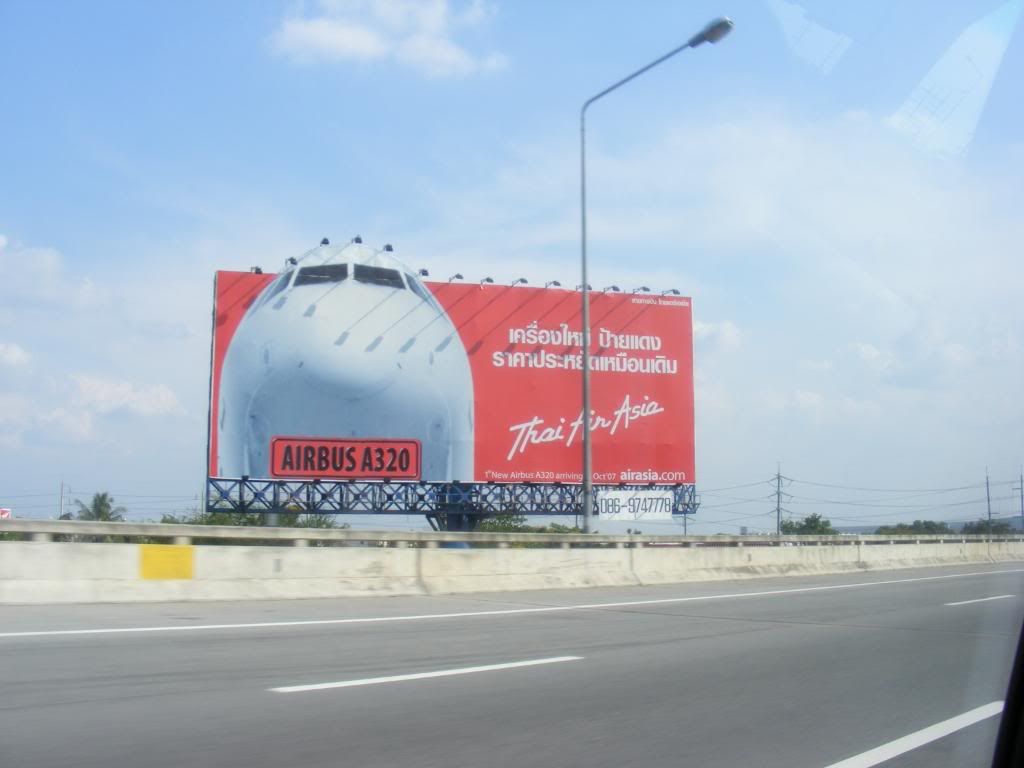

PRODUCT PACKAGING
Product packaging plays an important role in the marketing mix Packaging plays an important role as a medium in the marketing mix, in promotion campaigns, as a pricing criterion, in defining the character of new products, as a setter of trends and as an instrument to create brand identity and shelf impact in all product groups.
POSTER
A poster is a “public” piece of paper conveying information through text (words) and/or graphic images (symbols or pictures). It’s usually designed to be displayed vertically on a wall or window and is large enough to be seen and read from a relatively short distance. Its main target audience is the person walking by. A poster must convey its message with immediacy and purpose, because people on the street are often in a hurry.
GREETING CARD
Greeting cards are pieces of paper or cardboard upon which photos, drawings, and a verse of cheer, greeting, celebration, condolence, etc. have been printed or engraved. Greeting cards are decorated with a variety of images and include messages to appeal to diverse audiences, sentiment, and occasion to be remembered. Greeting cards are easily made at home using pen and paper or software sold by greeting card and other companies. Recently, virtual cards that include images and verse can be sent to someone by way of the Internet and e-mail and may be printed ou
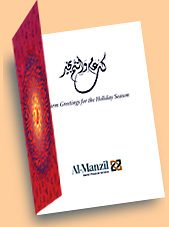
2. Mohd Fauzi Sedon
QUOTE DESIGN

Malaysian Famous Artist
1. Md. Yusoff Bin Othman
 |
| Md. Yusoff Bin Othman |
Md Yusoff bin Othman is a Malaysian artist and is one of the earlier generation figures of the Malaysian art scene. Born in 1949 from Pontian in Johor, Yusoff is widely considered to be one of the veterans among the young and emerging artists where his works is known to be highly expressive especially through his photography of objects and subject matter where his intricate composition is known to be one of the best among the community.
Yusoff has been involved in the education of the arts and photography where he lectures at the Universiti Teknology MARA in Shah Alam in Selangor. His early education was with the same university where he obtained his Diploma in Photography. He would then continue and venture overseas where he completed his Master in Fine Art at the Ohio University in the United States majoring in Photography which is very much his passion and calling. As an artist and educator, he has been actively participating in exhibitions at major art spaces around the country as well as abroad
Award And Exhibition
Yusoff’s photogprahy works have been very well received and has established him as one of the few great photography artists in Malaysia. He won the Consolation Prize at the National Photography Competition organized by the National Art Gallery in 1976 which was also when he won the best student in his Diploma course that year. He also won various prizes including the Main Prize at the International Children’s Year Photography competition organized by the National Art Gallery in 1979 and 10 years later, he would win the third and consolation prizes at the Pertandingan Fotografi Wajah-Wajah Malaysia and second prize at the Pertandingan Fotografi Keluarga Bahagia.
In terms of exhibitions, Yusoff’s artwork has been seen in major art spaces and galleries where he has been involved since the 1970s when he was still a student. In 1976, he was involved in the National Senifoto exhibition organized by the National Art Gallery. He was also involved in the diploma and faculty shows with UiTM while other shows include the ASEAN Photography and Painting exhibition which was held in Bangkok, Kuala Lumpur, Jakarta, Manila and Singapore in 1981. After he completed his Master in Ohio University, his works were exhibited at the Gradaute Photographic Exhibition as well as the MFA Thesis Show.
Other notable shows that Yusoff has been involve dinclude the ‘Insperasi’ show at the Galeri Shah Alam, Selangor, the ‘ALAMI II PUNCHAK’ show by National Art Gallery as well as his solo exhibition entitled ‘Simulacra The Colours of Nature’ held at the MAYA Galeri in Bangsar, Kuala Lumpur.
 |
| Md Yusoff Othman, Turbulent grain of Batu 1, Sungai Pisang, Gombak, photography |
 |
| Md Yusoff Othman, Quiet-Pertak, Selangor, photography |
 |
| Yusoff’s photography has been exemplary in many ways where there is no doubt about his techniques and skills having developed and enhancing them for more than 4 decades now. In his photography of Sungai Pinang which is part of his Simulcara series, it depicts a certain rapid section of the river through a mirrored image that somehow offers an optical image of a ‘face’. This is one a very exciting subject matter where it offers an interpretation that cannot be seen through the normal human eye and only through the artist’s one expressive nature. |
2. Mohd Fauzi Sedon
 |
| Mohd Fauzi Sedon |
Mohd Fauzi Sedon is one of the established Malaysian fine artists who has been making waves in the Malaysian art scene since graduating from the MARA University of Technology in 1993 with his Bachelor of Fine Art. Fauzi Sedon was born in Batu Pahat in Johor in 1971. It was here that he spend his early childhood while he then went on to the MARA Institute of Technology in Selangor to pursue his Diploma in Art and Design majoring in Fine Art. Apart from being involved in the making and development of art in the country, Fauzi has also been actively involved in the research and academic areas of art in which he has also been actively involved with exhibitions around and outside the country.
After completing his degree, Fauzi Sedon went on to complete his Master of Fine Art at the University of Central England in Birmingham with which he would finish his PhD 11 years later at the Tasmanian School of Art at the University of Tasmania. As an artist, Fauzi’s work has been known to be edgy where he expresses his subject matter through abstract and sharp images and objects. He uses colours to express the messages that he wants to in which he produces a pop-artish way of portraying his messages.
Exhibitions and awards
As an artist, Fauzi Sedon has been actively involved in the education and development of art. He was in the Deans List during his studying years in MARA while he also won awards and accolades like the Honorable Mention at the Philip Morris Art Award in 1998 as well as the Incentive Award at the 2003 Open Show organized by the Shah Alam Gallery. He has lecturing for many years that include stints at the Faculty of Art and Design at the Shah alam MARA Institute of Technology, the Limkokwing Institute of Creative Technology and at Universiti Pendidikan Sultan Idris in Tanjong Malim. Apart from that, Fauzi has also been involved in the consultancy roles where he was involved with the Perak Arts Foundation previously.
He has held solo exhibitions that include the ‘Statement Series – True Colours’ show at the NN Gallery and the ‘Packages Part 2’ show at the Avage Gallery in Hobart. In terms of groups shows, Fauzi Sedon work has been travelling around the country and the surrounding regions as early as 1990 where they were seen at the ‘100 Years Kuala Lumpur Anniversary’ show, the ‘Selected Printmaking Show’ organized by Petronas Gallery, the ‘Expressions’ show in Birmingham, the ‘Young Contemporary’s Exhibition’ organized by the National Art Gallery as well as the ‘11th Asian Art Bienalle’ in 2004 held in Dhaka, Bangladesh
Clearance Discount – Mixed Media
In Fauzi Sedon’s mixed media work entitled ‘Clearance Discount 60%’ it depicts Fauzi’s intention to convey a distinctive message in which it looks at a mixed emotional integration of text and perhaps thoughts of today’s social happenings which encircles around shopping and the spending of money on material needs. This is an interesting take that expresses how the current social environment is like and is one that Fauzi expresses so effectively.
 |
| Mohd Fauzi Sedon, Discount 50%-70% part III , Mixed media , 90x90cm , 2010 |
 |
| 03-BBYGPB-000-241, mixed media, 85cm x 85cm |
 |
| Mohd Fauzi Sedon, Sale # part V, Mixed media , 90x90cm, 2010 |
3. Sharmiza Abu Hassan
 |
| Sharmiza Abu Hassan |
Sharmiza Abu Hassan is Malaysian artist who graduated from the MARA University of Technology in Shah Alam with a Bachelor in Fine Art. She comes from Taiping in Perak where she was born in 1972 and is among the few female Malaysian artists who is known for her sculpture works and the more 3-dimensional visual works. After her degree years, she has been actively involved in the Malaysian art scene and in 1999, she was awarded a scholarship to further her studies to Australia where she completed her Master of Creative Arts at the University of Wollongong.
Sharmiza is a lecturer with her alma mater at the Faculty of Art and Design in MARA where she is undergoing her doctorate in Fine Art at the prestigious RMIT. As an artist, Sharmiza has been mainly involved in sculpting and installation where she is known to integrate the likes of history, legends and celestial subject matter in the social and daily practices. As a lecturer, she was previously the head of the Fine Art Department where she was also formerly attached with the One Academy Art College while she was also apprenticed under Ramlan Abdullah, one of the most renowned Malaysian sculptors in history.
Exhibitions and awards
Sharmiza has won numerous awards for her exemplary works in the arts that include the scholarship to pursue her postgraduate studies. As a student, she was in the Deans’ List in the faculty while she also won the Best Student Award. Apart from that, she also won the Minor Award in the National Art Gallery’s Young Contemporary Art Competition, a finalist in the Malaysian Maquette Stage during the 3rd Oita Asian Sculpture Competition and the Honorable Mention at the Philip Morris Art Competition as well. In 2001, she was awarded the Young Lecturer Scheme Scholarship while she again emerge a finalist at the 6th Oita Asian Sculpture Competition.
Apart from that, she also previously won the Juror’s Award at the 2004 Young Contemporary Art Competition. Among her involvement in art exhibitions are the ‘Warisan Melayu :Tradisi & Inovasi, Kongres & Ekspo Warisan Melayu’ by UiTM, the ‘WWF,Paradise Lost Paradise Found’ show held at the Rimbun Dahan Gallery and the ‘Alegori Ledang’ show which was her first solo exhibition held at the Maya Gallery in Kuala Lumpur.
Apart from that, her works were also seen at notable shows like the ‘Wahana – Malaysian & Singaporean Artist’ show organized by the National Art Gallery, the ‘Formative – Contemporary Sculpture Exhibitions’ at Valentine Willie Fine Art as well as in Australia at the ‘Echoes of Dreams’ in Spark Gallery of the University Of Wollongong while they have also travelled to the Singapore Art Festival, the HotBath Gallery in Bath, the Atrium Gallery in London at the ‘Light and Reflections, Contemporary Malaysian Art’ show and many more.
 |
| Sharmiza Abu Hassan – Kias A Cup Of Coffee (Installation) |
Using stainless steel, mirror and glass, the Kias Secawan Kopi installation is one of the few thought provoking works by Sharmiza. It makes the viewer think about what Sharmiza is trying to convey because the title depicts the ‘analogies of a cup of coffee’. As with most installation works, Sharmiza offers a different perspective to what the viewer would think because it is more about the message than the subject matter which Sharmiza has done so well here.
4. Hanim Hassan
 |
| Hanim Hassan |
Hanim Hassan is one of the most exciting Malaysian artists in recent years. Where most artists have continued the tradition of conventional art with painting of oil and the usual subject matter, Hanim has been working relentlessly to bring her passion onto the art scene of Malaysia.
Hamidah Hanim binti Hassan was born in 1980 in Kuala Lumpur where she grew up in the southern state of Johor. The mother of one is married to Asrul Affendy bin Dato’ Houd. She studied at the Sultan Ibrahim Girls’ School and then continued to venture into her passion in design where she obtained her Diploma in Advertising and Graphic Design at The One Academy of Communication Design before venturing into another area with Limkokwing University of Creative Technology in which she completed her Diploma in Industrial (Product) Design.
Before painting full-time, Hanim has worked in the industry where she brings with her years of Graphic Designing experience and since she got married, she has continued to practice as a freelance graphic designer. In 2011, she ventured into a leap of faith where she went full-time, immersing into her art and produced some of the most compelling artwork in recent years.
Education and experience
Hanim’s body of work is very unique and original as they differ from the conventional art that are seen around the industry today. This is mainly due to her years of experience in graphic design and her own traditional values. A certain shade of oil strokes creates the right impression of her work like that was seen in her 2010 ‘Kemasik Fishing Boats on the Seashore’.
It is in the interplay of colours that Hanim injects into her oil paintings that makes them special. One cannot but to associate the oil strokes, which is her preferred medium to the techniques of Claude Monet’s ‘The White Water Lilies’ but with a more current and contemporary touch to them. Another painting entitled ‘Perhentian Pagi’ is perhaps the best testimony of Hanim’s exemplary techniques.
THE AWARD; A TOUCH OF LONESOME BY HANIM HASSAN
 |
| merak jantan lores |
 |
| Hentian pagi lores |
 |
| budak tengah tidur lores |
5. Datuk Ibrahim Hussein
 |
| Datuk Ibrahim Hussein |
Datuk Ibrahim Hussein is widely regarded to be one of the ‘veterans’ in the Malaysian art scene. Born on 13 March 1936, Ibrahim comes from Kedah and passed away in 2009 at the age of 72. As an artist, Ibrahim has been instrumental in creating movements in the art scene while his works have been known for his techniques as well as his trademark. He was the artist who created what he named as ‘Printage’ which is a combination of 2 main art techniques, printing and collage.
Ibrahim knew that art was his passion from his early childhood where he would study at the prestigious Nanyang Academy of Fine Arts in Singapore before continuing his education at the Byam Shaw School of Art and the Royal Academy Schools in 1959. He would then be working as a postman as well as film extra to help him financially in London and would later travel to France and Italy to further expand his techniques after he was awarded an Award of Merit Scholarship.
After that, he was appointed the resident artist at University of Malaya and would go on to establish the Ibrahim Hussein Museum and Cultural Foundation in Langkawi island, which is a non-profit foundation and museum developed to promote art and culture to the masses.
Artwork
 |
| Datuk Ibrahim Hussein – Kabuki |
 |
| Datuk Ibrahim Hussein – The Dream |
QUOTE DESIGN
 |
| Original Quote |



No comments:
Post a Comment